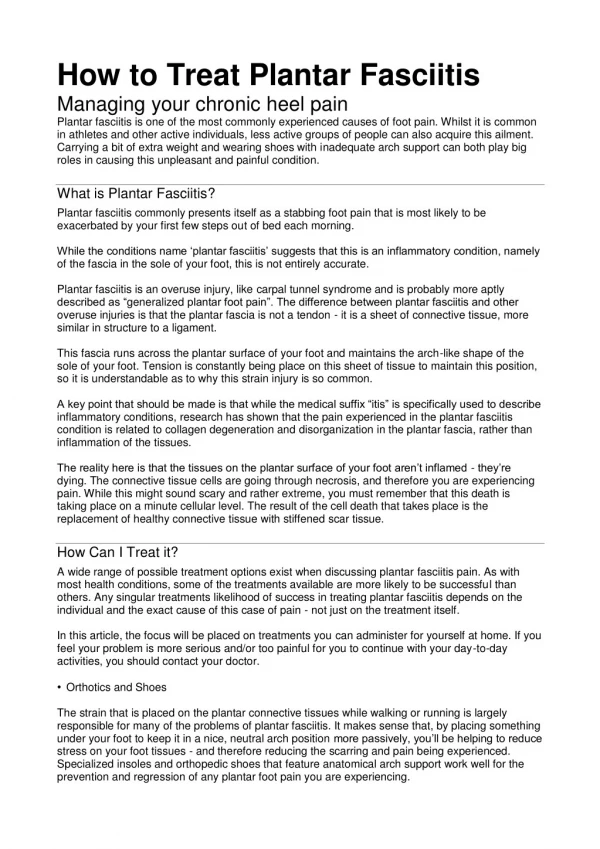How To Treat Plantar Fasciitis
MANAGING YOUR CHRONIC HEEL PAIN Plantar fasciitis is one of the most commonly experienced causes of foot pain. Whilst it is common in athletes and other active individuals, less active groups of people can also acquire this ailment. Carrying a bit of extra weight and wearing shoes with inadequate arch support can both play big roles in causing this unpleasant and painful condition. What is Plantar Fasciitis? Plantar fasciitis commonly presents itself as a stabbing foot pain that is most likely to be exacerbated by your first few steps out of bed each morning. While the conditions name ‘plantar fasciitis’ suggests that this is an inflammatory condition, namely of the fascia in the sole of your foot, this is not entirely accurate. Plantar fasciitis is an overuse injury, like carpal tunnel syndrome and is probably more aptly described as “generalized plantar foot pain”. The difference between plantar fasciitis and other overuse injuries is that the plantar fascia is not a tendon - it is a sheet of connective tissue, more similar in structure to a ligament. This fascia runs across the plantar surface of your foot and maintains the arch-like shape of the sole of your foot. Tension is constantly being place on this sheet of tissue to maintain this position, so it is understandable as to why this strain injury is so common. A key point that should be made is that while the medical suffix “itis” is specifically used to describe inflammatory conditions, research has shown that the pain experienced in the plantar fasciitis condition is related to collagen degeneration and disorganization in the plantar fascia, rather than inflammation of the tissues. The reality here is that the tissues on the plantar surface of your foot aren’t inflamed - they’re dying. The connective tissue cells are going through necrosis, and therefore you are experiencing pain. While this might sound scary and rather extreme, you must remember that this death is taking place on a minute cellular level. The result of the cell death that takes place is the replacement of healthy connective tissue with stiffened scar tissue.
★
★
★
★
★
62 views • 2 slides
